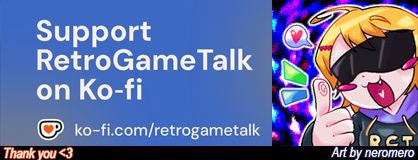- Joined
- Mar 17, 2025
- Messages
- 54
- Reaction score
- 78
- Points
- 127
Apparently, the new CEO of Sega of America, Shuji Utsumi, has made it his mission to restore Sega to its former glory after decades of poor business decisions that led to the company's current poor reputation among the gaming community. In particular, he plans to return to Sega's roots, which means bringing its older ips to the newer generation, chief among them the long dormant Virtua Fighter series. The video shown at the Consumer Electronics Show looks, frankly, amazing
Sega HAS attempted to revive some of its old properties before, with limited success. Golden Axe: Beast Rider was quietly swept under the rug following a less than stellar reception (here's GameSpot's 5/10 review of the release from way back), and Nights: Journey of Dreams was better received, but still seen as a middling revival that failed to make Nights relevant again.
And don't even get me started on Sega's half-hearted attempts to bring their old 3D Sonic games to later hardware. Frankly, while claims that Sonic Adventure 'hasn't aged well' aren't entirely unfounded, I feel that reputation comes more from Sega's half-hearted attempts to port the title to later hardware. Let's start with Sonic Adventure DX. That one was more unstable, controlled worse, and did not have the original's lighting engine. Sure, it did make some improvements to textures and the unlockable game gear titles were a nice touch, but there is no excuse for it to have been released in that state.
And don't even get me started on the xbox 360 and ps3 re-release in 2010. That one was an embarrassment that made SADX on gamecube look like Baldur's Gate in comparison. Not only did they NOT update the graphics for the new hardware, they didn't even bother to change the aspect ratio, leaving the game with a distracting blue border around the edge of the screen. What's more, the controls from the gamecube version remain unchanged, so the choppy movement still feels less precise than the full 3D movement from the original Dreamcast version. About the only thing in its favor is that it at least runs smoothly, unlike the previous releases. And, more recently, we got Sonic Colors Ultimate, and.....less said about that, the better. For comparison, look at Nintendo's re-releases. Super Mario 64 had many of the same problems with camera and control as other 3D platformers of the time (it's camera was even worse than SA's, if anything), yet it's reputation as one of the greatest games ever made has held up nearly thirty years later. So, if SM64 has the same flaws as Sonic Adventure, why is it remembered more fondly?
Simple, unlike Sega, Nintendo actually put the time and resources into ironing out the kinks for subsequent releases. The first of these came as early as 1997, with the Japan-only Shindou version. This version updated the title to include support for the n64 controller's rumble pak, as well as ironed out bugs like an infinite jump bug. But perhaps the most ambitious re-release came with the ds launch title, Super Mario 64 DS. The DS remake gets a lot of flack for the less-than-ideal d-pad control, but while the controls certainly leave something to be desired, in all other respects, SM64 DS is what remakes of classic titles should aspire to be: more content, touched-up visuals, and simply an overall more polished feel than the original game. Most recently, the Shindou version got its first Western release with Super Mario All-Stars on the Nintendo Switch, and its a shame Nintendo de-listed it so badly. If Sega gave its re-releases nearly as much love, the Sonic franchise might have looked a lot different today.
But then, something changed. In 2024, Sega of America and Europe got their new CEO, and we got a re-release of Sonic Generations, bundled together with the excellent new game, Shadow Generations. Taken on its own, Sonic Generations succeeded where previous Sonic re-releases failed and provided gamers with a stable, polished version that didn't tarnish their memories of the original. And the fact that it came bundled with what was essentially a brand new game was the icing on the cake. With this, Sega has finally proven they are, in fact, capable learning from their mistakes. Next, give us the long awaited Sonic Adventure remake, whaddaya say?
Sega HAS attempted to revive some of its old properties before, with limited success. Golden Axe: Beast Rider was quietly swept under the rug following a less than stellar reception (here's GameSpot's 5/10 review of the release from way back), and Nights: Journey of Dreams was better received, but still seen as a middling revival that failed to make Nights relevant again.
And don't even get me started on Sega's half-hearted attempts to bring their old 3D Sonic games to later hardware. Frankly, while claims that Sonic Adventure 'hasn't aged well' aren't entirely unfounded, I feel that reputation comes more from Sega's half-hearted attempts to port the title to later hardware. Let's start with Sonic Adventure DX. That one was more unstable, controlled worse, and did not have the original's lighting engine. Sure, it did make some improvements to textures and the unlockable game gear titles were a nice touch, but there is no excuse for it to have been released in that state.
And don't even get me started on the xbox 360 and ps3 re-release in 2010. That one was an embarrassment that made SADX on gamecube look like Baldur's Gate in comparison. Not only did they NOT update the graphics for the new hardware, they didn't even bother to change the aspect ratio, leaving the game with a distracting blue border around the edge of the screen. What's more, the controls from the gamecube version remain unchanged, so the choppy movement still feels less precise than the full 3D movement from the original Dreamcast version. About the only thing in its favor is that it at least runs smoothly, unlike the previous releases. And, more recently, we got Sonic Colors Ultimate, and.....less said about that, the better. For comparison, look at Nintendo's re-releases. Super Mario 64 had many of the same problems with camera and control as other 3D platformers of the time (it's camera was even worse than SA's, if anything), yet it's reputation as one of the greatest games ever made has held up nearly thirty years later. So, if SM64 has the same flaws as Sonic Adventure, why is it remembered more fondly?
Simple, unlike Sega, Nintendo actually put the time and resources into ironing out the kinks for subsequent releases. The first of these came as early as 1997, with the Japan-only Shindou version. This version updated the title to include support for the n64 controller's rumble pak, as well as ironed out bugs like an infinite jump bug. But perhaps the most ambitious re-release came with the ds launch title, Super Mario 64 DS. The DS remake gets a lot of flack for the less-than-ideal d-pad control, but while the controls certainly leave something to be desired, in all other respects, SM64 DS is what remakes of classic titles should aspire to be: more content, touched-up visuals, and simply an overall more polished feel than the original game. Most recently, the Shindou version got its first Western release with Super Mario All-Stars on the Nintendo Switch, and its a shame Nintendo de-listed it so badly. If Sega gave its re-releases nearly as much love, the Sonic franchise might have looked a lot different today.
But then, something changed. In 2024, Sega of America and Europe got their new CEO, and we got a re-release of Sonic Generations, bundled together with the excellent new game, Shadow Generations. Taken on its own, Sonic Generations succeeded where previous Sonic re-releases failed and provided gamers with a stable, polished version that didn't tarnish their memories of the original. And the fact that it came bundled with what was essentially a brand new game was the icing on the cake. With this, Sega has finally proven they are, in fact, capable learning from their mistakes. Next, give us the long awaited Sonic Adventure remake, whaddaya say?



